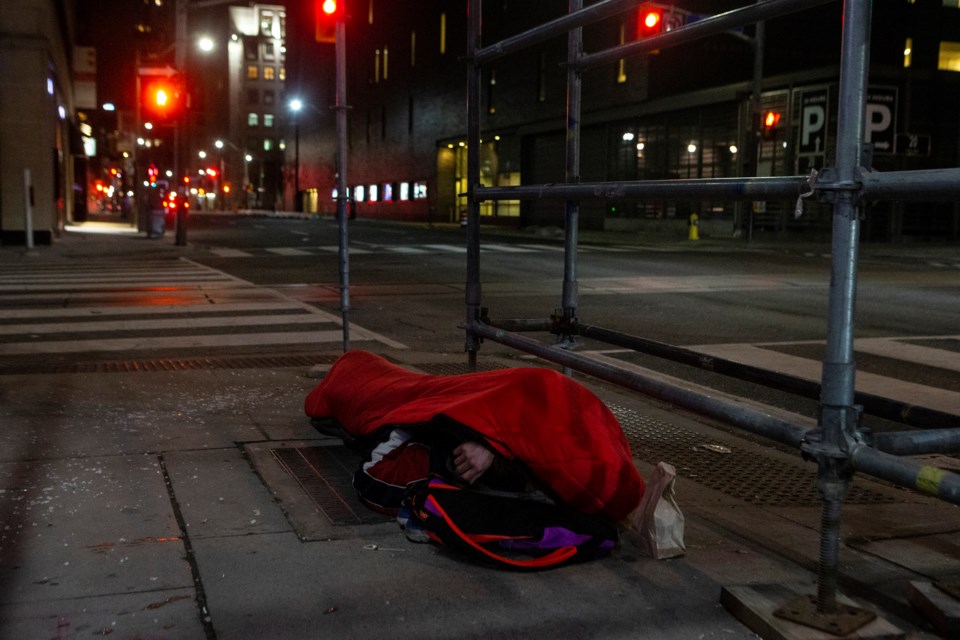As challenges with housing and the health-care system have persisted in Ontario, the provincial government has for years been mulling over a report suggesting how to make a dent in both, while also offering taxpayers better bang for their buck.
A few years ago, the Ministry of Municipal Affairs and Housing hired consulting firm KPMG to do a cost-avoidance review of supportive housing in Ontario. The firm was tasked with assessing the state of supportive housing in the province, and examining other jurisdictions’ approaches and case studies to determine the downstream impacts supportive housing investments have on different services.
KPMG’s final report said that “three of four case studies of supportive housing projects demonstrated a positive cost offset, meaning that the costs avoided were greater than the cost to serve each client each year.” The firm submitted its final report to the provincial government in May 2022.
An “average annual return on investment between $1.60 and $2.00 for every $1.00 spent on supportive housing” was found by KPMG, according to another housing ministry-produced document. It, along with a partially redacted version of the firm’s May 2022-completed report, was obtained by The Trillium using the freedom of information system.
Specifically, the firm’s report said, “Cost avoidance was primarily observed in the health sector, specifically in decreased hospitalizations and ED visits.”
Supportive housing differs from social (or community) housing by combining lower-cost, often government-subsidized, living spaces with support services. These services include things like counselling, skills training, mental health and addictions supports and more, depending on the facility.
Findings from a different, more recent report can help explain how supportive housing can ease the burden and cost on the health-care system.
Through research it did for a report it released last month, Addictions and Mental Health Ontario (AMHO) found that nine per cent of patients in hospital mental health beds in the province are designated as alternative level of care (ALC) patients. A patient is given this designation once a hospital determines they no longer require its level of care.
AMHO, which represents about 150 addictions and mental health organizations in the province, found that it costs a hospital $730 to $1,200 a day to care for an ALC patient. Meanwhile, mental health and addictions supportive housing costs about $75 to $150 a day.
“Expanding access to transitional housing would reduce hospital congestion, improve care continuity, and generate substantial cost savings,” AMHO wrote in its March 2025 “Unlocking Solutions” report.
The need for supportive housing in Ontario is much greater than what is available, data from a range of sources show.
A couple of years ago, the Ontario government tallied the province’s total supportive housing spaces, finding they offered room for about 73,000 people at the time. The housing ministry-prepared briefing binder containing that tally also said about 27,000 Ontario adults with a developmental disability were as of last year waiting for residential supports and services. In Toronto alone, 15,000 people were awaiting mental health or addictions support services, it added.
Addictions and Mental Health Ontario (AMHO) recently found that there were more than 36,000 people on mental health and addictions supportive housing waitlists in Ontario. Fewer than 1,000 people on waitlists make it into supportive housing each year, AMHO’s report also said.
The Association of Municipalities of Ontario (AMO) received widespread media attention this January when it released a report estimating there were more than 80,000 people who experienced homelessness in the province last year. Creating more supportive housing in Ontario was among AMO’s main recommendations for combating the issue of homelessness.
The housing ministry’s strategic plans for the last two years have each included “continuing to analyze the findings from the cost avoidance review of supportive housing (KPMG contributed to) … to inform ongoing work moving forward to improve Ontario’s supportive housing system.”
In response to questions about KPMG’s cost avoidance review, a spokesperson for Municipal Affairs and Housing Minister Rob Flack responded with a statement about the Ford government’s approach to supportive housing.
“We are investing $1.7 billion to improve access to supportive housing, including $700 million through the Homelessness Prevention Program, which supports municipalities deliver programs to address homelessness that best meet local needs,” wrote Alexandra Sanita, Flack’s spokesperson.
“This is in addition to the $75.5 million we are providing to communities to provide vulnerable Ontarians with appropriate short-term and long-term housing alternatives to encampments,” continued Sanita, who also highlighted the government’s HART Hubs plan.
As part of 28 new HART — Homelessness and Addiction Recovery Treatment — Hubs, the Ford government plans to add 560 “highly supportive housing units,” the housing minister’s spokesperson said.
The lone mention of supportive housing in the PC Party’s recent platform was as part of its HART Hubs, which it said it planned to spend $530 million building. About one-third of these new facilities are replacing drug consumption sites that a bill the Ford government passed last year forced to close. The legislation is the subject of an ongoing court case.




